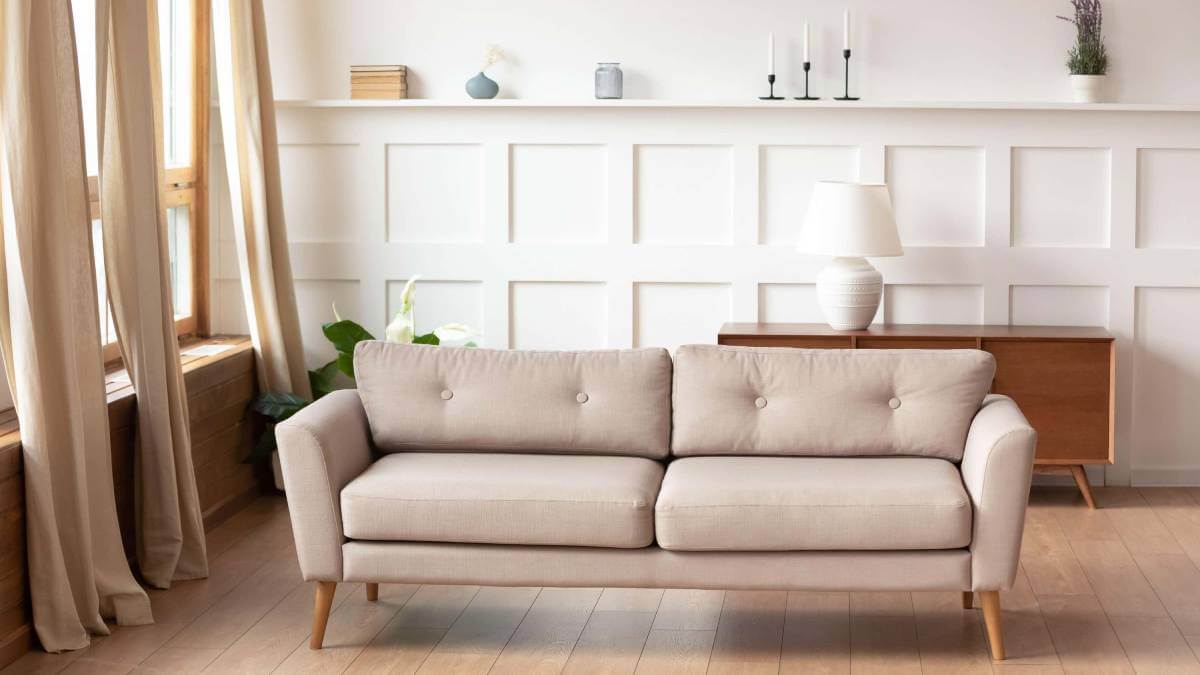Summer is on its way, and it’s time to shake off those winter blues.
“Not every room is blessed with masses of natural light, but have no fear – there are some interior design tricks that can be used to exaggerate the available light,” promises James Greenwood, interior expert at Graham & Brown.
Here Mr Greenwood and other interior experts give their tips on how to make dark rooms seem lighter …
1. Use light or warm colours
Using warm shades from the pink, red, orange and yellow colour families, which reflect light, can help bounce available light around the room, Mr Greenwood suggests.
“These colour groups burst with joy and have a wide range of shades, depending on how subtle or how much of a statement you want to make in the room,” he says.

2. Try ‘colour drenching’
Instead of painting ceilings, skirting boards or walls different colours, the current trend of colour drenching – where everything is the same shade – can help lighten rooms, Mr Greenwood says.
He says this “tried and tested drenching technique blurs the usual sharp lines of a room, so your eyes aren’t drawn to corners”.
3. Choose gloss paints for walls
“Even if it’s the same shade, more light will bounce off a wall painted with a high gloss paint than a wall painted with matte paint,” says Michael Reading, property expert from Housetastic.co.uk, on behalf of ConservatoryLand.
“If you have a particularly dark room in your home that doesn’t get much natural light, gloss paints would be the best option for encouraging the light to flow.”

4. Opt for lighter flooring
Choosing lighter-coloured flooring can make a room seem much brighter, explains Vicki Foster, interior stylist at furniture and flooring retailer ScS.
“Bright flooring, or a light colour on the walls, can lift a room instantly and give the light something to bounce off,” she says. “If you’re looking to maximise the light – if your budget can stretch – opt for a light laminate that will help project light around the room.”
5. Make use of mirrors
Mirrors are one of the most effective ways to reflect more light into a room and make it appear much bigger, says Mr Reading.
“Using mirrors in the right places can help disperse any existing natural light that’s flowing into the room,” he explains. “If you want to increase the amount of natural light in your home, hanging mirrors is highly recommended. Invest in good quality, decorative mirrors that you can place in various areas around the home.”
View this post on Instagram
6. Add reflective or glass tiles
Glass tiles in kitchens and bathrooms are the next best thing to installing mirrors, Mr Reading says. “In the right lighting, glass tiles can reflect almost 100 per cent of the light that hits them right back into the room.
“If you’re not a fan of glass tiles, highly glossy ceramic or metallic tiles can produce a similar effect. Alternatively, consider installing a metallic splashback in the kitchen – this is not only very effective in reflecting natural light into the room, but it’s also very trendy.”
7. Rejig furniture and remove clutter
Having too much furniture in the wrong places can stop light flowing through a room and make it feel darker than it actually is, Ms Foster explains.
“To overcome this, assess where the light comes in and which areas it struggles to reach – and move around your furniture, or cut down on the amount in the room, to help create more space for light to fill.”
8. Move a wall or add a skylight
It’s an extreme step, but removing interior walls can really brighten up some spaces, explains interior designer Sarah Vanrenen.
“Depending on the project, sometimes taking walls out can gain a lot of light and a feeling of space,” she says. “Where there are more light sources from different directions, it ensures there’s always light coming in at different times of day.”
Another option, she suggests, is creating a ‘light well’ – a glass and timber structure on a flat roof to bring natural light into a dark room. Skylights in a slanted roof can also increase a room’s natural light.
View this post on Instagram
9. Be careful with curtains
“I can never quite believe my eyes when I see blinds inside a reveal of a window, cutting out a quarter of the window panes,” Ms Vanrenen says. “They should always sit on the outside of the reveal to fit the architrave if there is one.
“Curtains should, wherever possible, draw back so when opened the leading edge is just in line with the inside of the reveal or architrave, and if there’s a pelmet, it should sit just below the top edge of the reveal, allowing the maximum amount of light into a room.”
And Ms Foster adds: “Swapping heavy curtains out for a thinner material that can let some light through but still offer privacy can give the illusion of extending the window and not cutting off a light source completely.”
Do you have a dark room in your house? Would you try any of these design tricks to bring in the sun?
Why not share your design tips in the comments section below?
Also read: Do you clean enough? Check our guide to see what is ‘normal’

